Words Design HotelsImages teamLabDate 03 November 2023
As a result, the spaces we occupy are being designed to soothe, enrich, and surprise us. For the groundbreaking international art collective teamLab, this has been its sole purpose since its inception in 2001—to enable us to experience the world through immersive art. In the decades since, teamLab’s projects have shattered the art and design industries, combining science, technology, and nature to dissolve the boundary between art and the viewer.
From transforming a Kyushu forest into an art space by using immaterial non-material digital technology that can turn nature into art without harming it to suspending 13,000 living orchids from the ceiling in Tokyo, teamLab’s labyrinths of multi-sensory virtual experiences aim to have no distinction between human consciousness, nature, and the universe. As part of the Design Hotels 2024 Further Forecast, together with SOON Futures we interviewed teamLab’s communication director Takashi Kudo on the power of art on our perception and environment. Read an excerpt below.

Takashi Kudo, Global Brand Director, teamLab
Takashi Kudo
We’re interested in exploring the relationship between the self and the world, and about building new perceptions through art too. In order to understand the world around us, we tend to compartmentalize independent entities with perceived boundaries between them. teamLab seeks to transcend those boundaries that influence our perception of the world: We want to go beyond the relationship between the self and the world.
Everything exists in a long, fragile, yet miraculous and borderless continuity within life. Today, for example, if there’s a problem on the other side of the earth, it affects our respective countries. They’re connected despite distance and borders. We can no longer pretend that we can live life in our bubbles; we’re all on earth, we’re all connected, and we’re all part of nature.
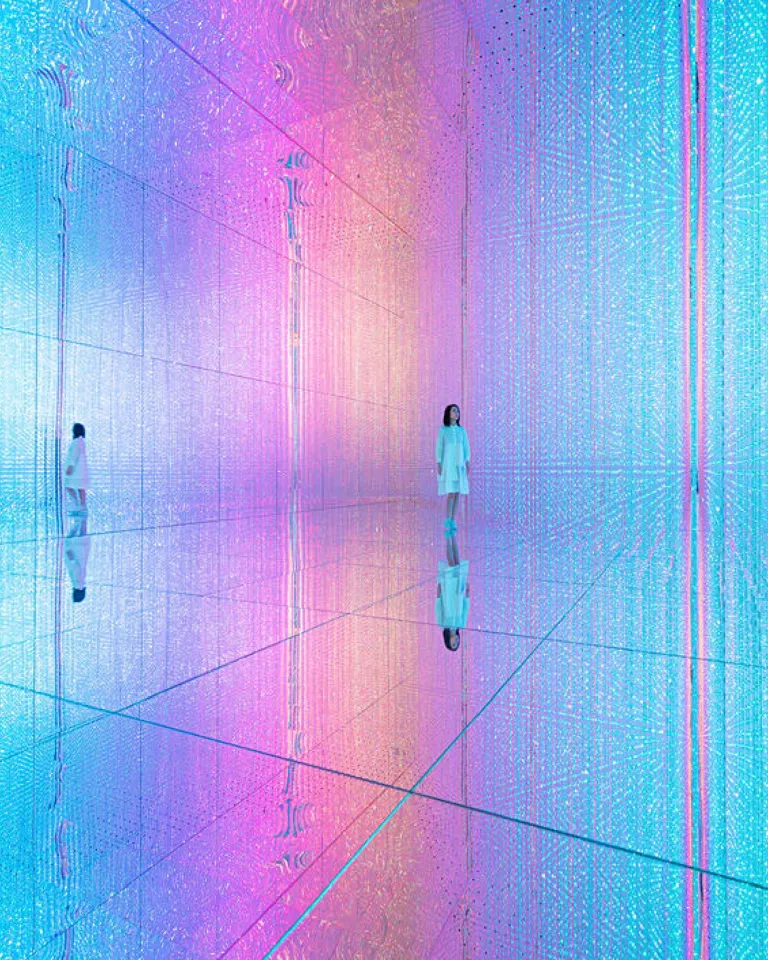
teamLab, The Infinite Crystal UniverseI © teamLab
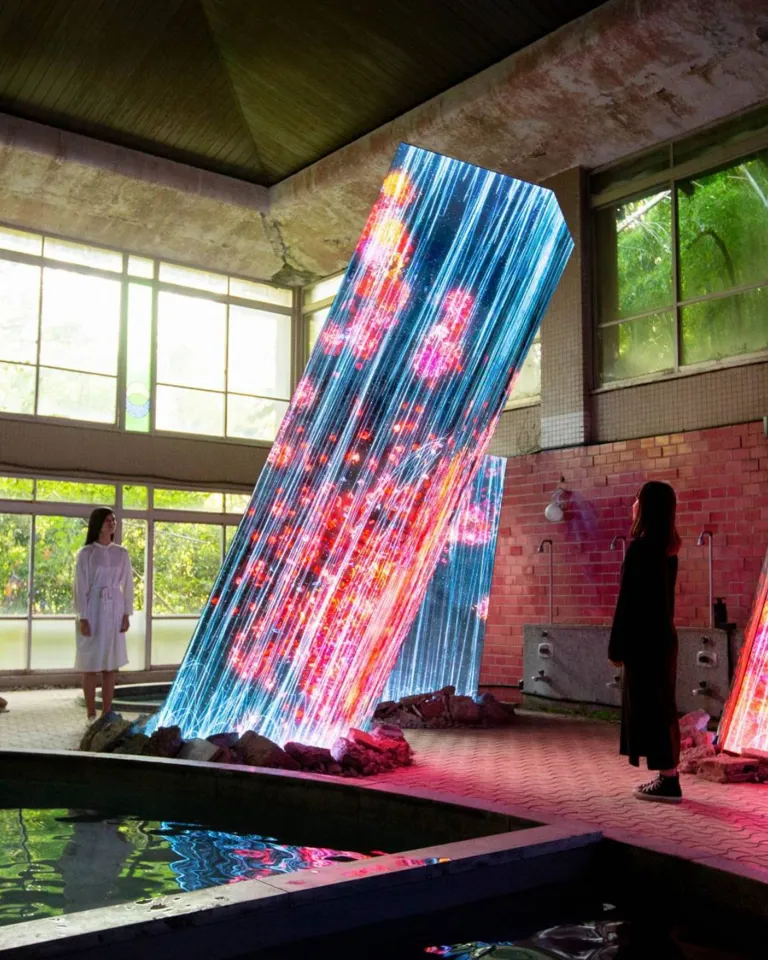
teamLab, Megaliths in the Bath House Ruins © teamLab
It’s hard to say how art will evolve for others, but there seems to be a misconception that digital art is part of the future; that it’s not already part of the present. Technology—when used as a medium—can change people’s way of thinking, expand their means of expression, and extend art. Many younger artists are already embracing and developing AI technology as an artistic medium. Digital forms of expression are not a thing of the future; digital art is already here.
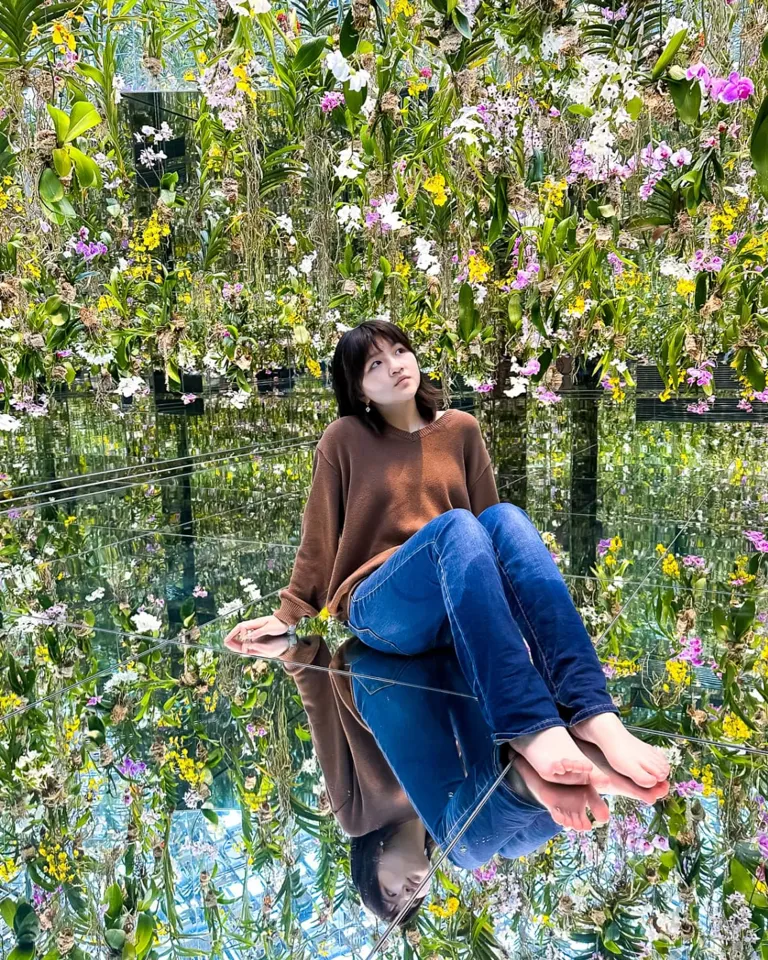
teamLab, Floating Flower Garden: Flowers and I are of the Same Root, the Garden and I are One
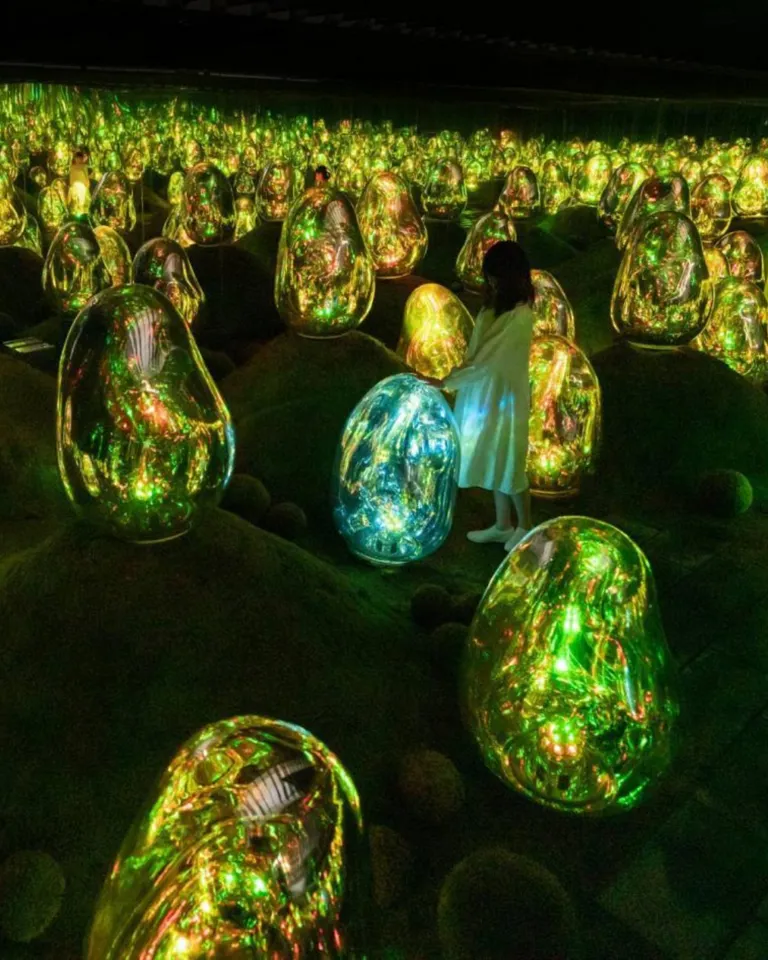
teamLab, Moss Garden of Resonating Microcosms: Solidified Light Color, Sunrise and Sunset © teamLab
Basically, most, if not all, human-made artifacts are made from nature. Humans can create something by using nature as it is, without modifying it, without physical intervention. Digital art uses elements like software, sensing, networks, lights, and sound. These are non-material and have no physical impact on their surroundings. So we aim to transform available nature into art, without changing it or destroying it. The idea is to keep nature alive.
For the Mifuneyama Rakuen installation, for example, we purposely played on how ambiguous and unclear the boundaries are between the natural world and those spaces created by humans.
For thousands of years, people have found meaning in those million-year-old forests; they have used the rock; inhabited the caves. Our approach was to explore and communicate this long, delicate and miraculous balance that’s developed between nature and human beings.
This continuity is rather hard for us to sense in our everyday lives. We feel like Mifuneyama Rakuen is a place where one can still observe and feel that relationship between humans and nature, something that may be different from what we experience during our modern lives. Unlike a physical painting on a canvas, non-material digital technology can liberate art from the physical realm. Because of its ability to transform itself freely, it can also transcend boundaries, and create a space where people can feel connected with other people and to others around the world.
teamLab, Forest and Spiral of Resonating Lamps: One Stroke, Metropolis © teamLab
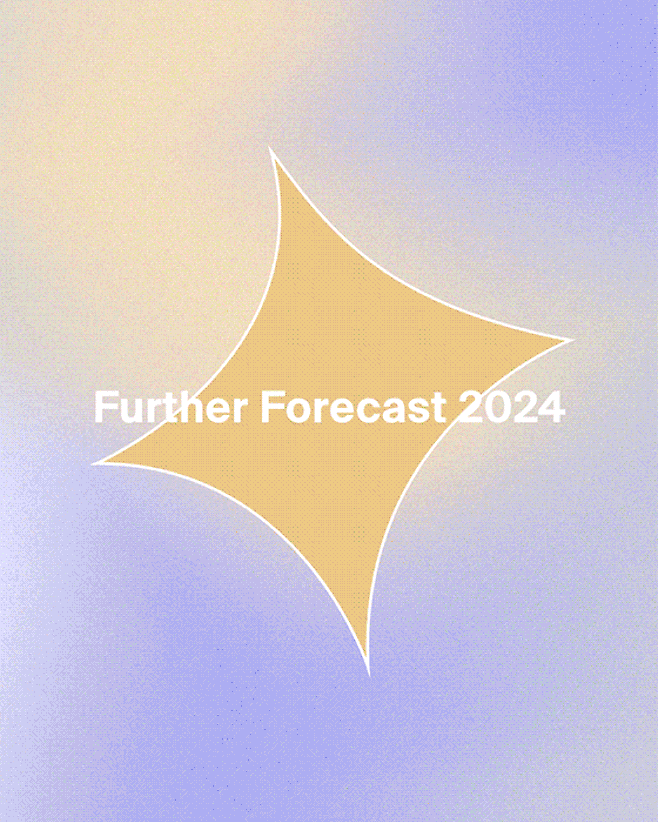
The Further Forecast synthesizes the most relevant developments in hospitality, art, design, technology and beyond. Discover more than 158 pages of actionable insights, interviews and case studies give way to ideas and people that are revolutionizing the way we experience travel today and for tomorrow.